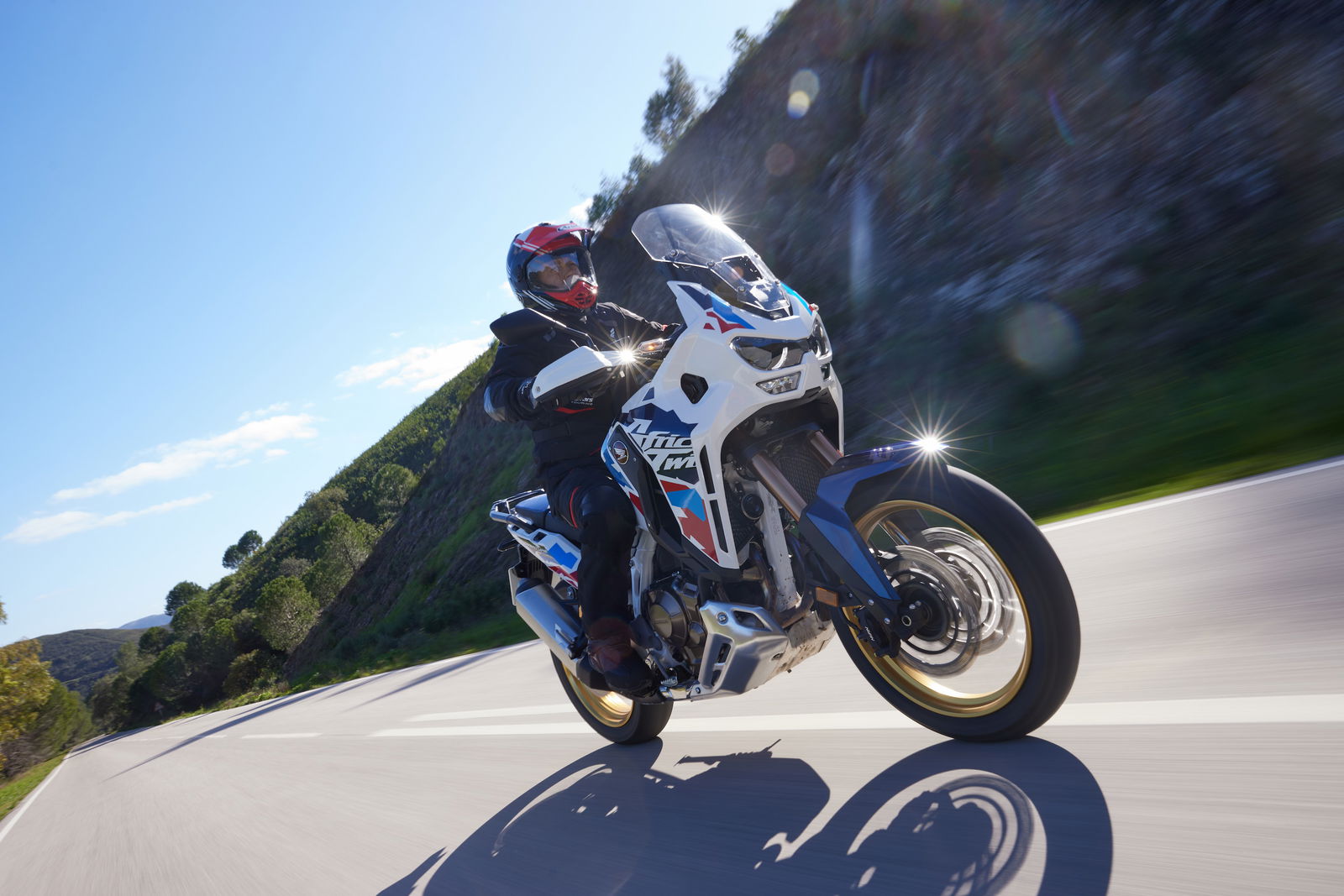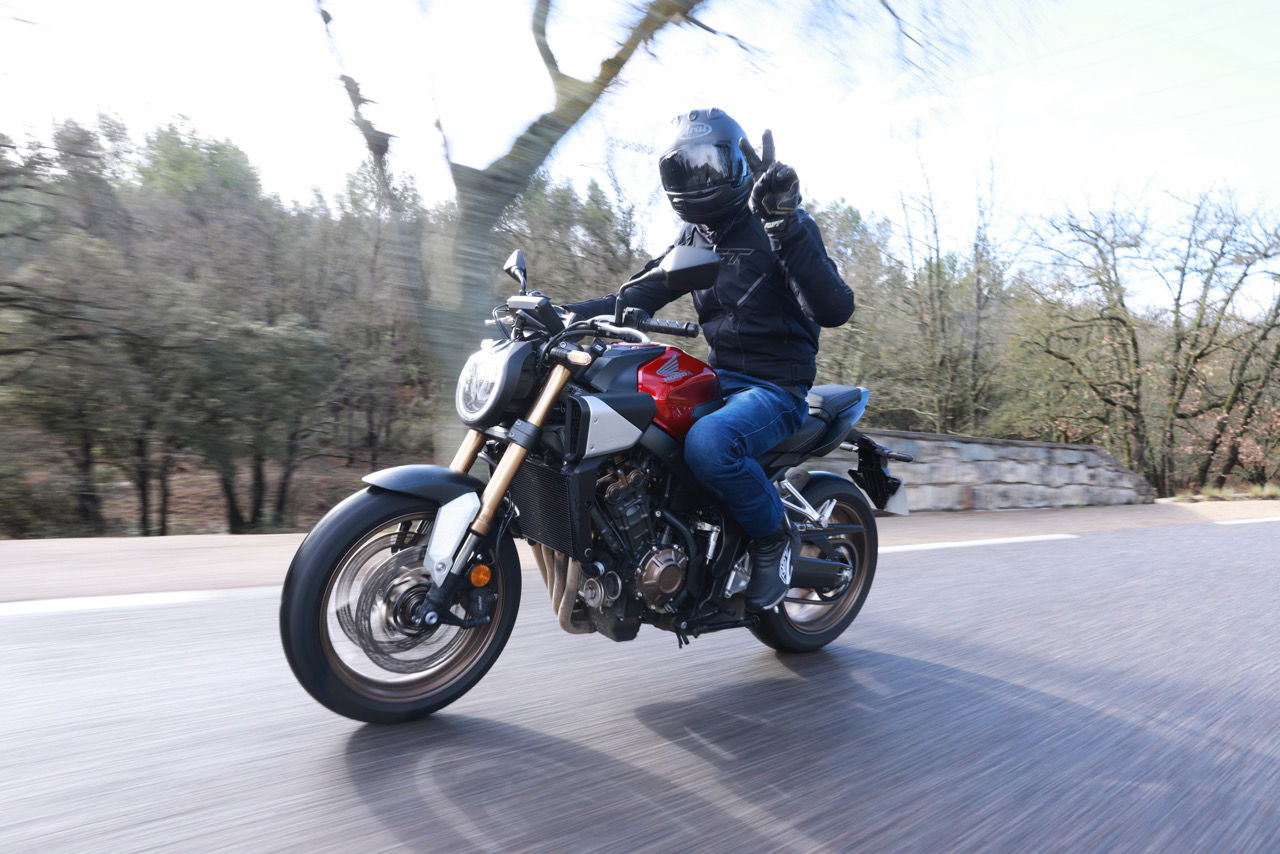2024 Triumph Rocket 3 Storm R & GT Review: Glorious Absurdity, Refined
The new Rocket 3 Storm offers much the same riding experience as the outgoing bike, but various tweaks make it more appealing than ever

They say competition breeds innovation, but that doesn’t explain the existence of the Triumph Rocket 3 and its continual tweaking. Triumph claims it’s in a “class of one,” and it’s hard to argue with that. Yes, there are plenty of other ways you can spend over £20,000 on an outlandish cruiser, on a Ducati Diavel for instance, but none are anything like the Rocket 3.
With a giant, longitudinally-mounted triple that’s by far the world’s biggest production motorcycle engine, more torque than any other bike out there, and a surprising keenness to tackle your favourite B-road, it really is unique. For 2024, then, Triumph could probably get away with doing little more than updating that monstrous inline-three to meet Euro5+ emissions standards.
The British brand has done a whole lot more than that, though, changing a whole lot of stuff including a slight change to the name, the Rocket 3 Storm. We rode the new bike on a variety of roads at the international press launch in South France to see how all of this stacks up.
Price and availability
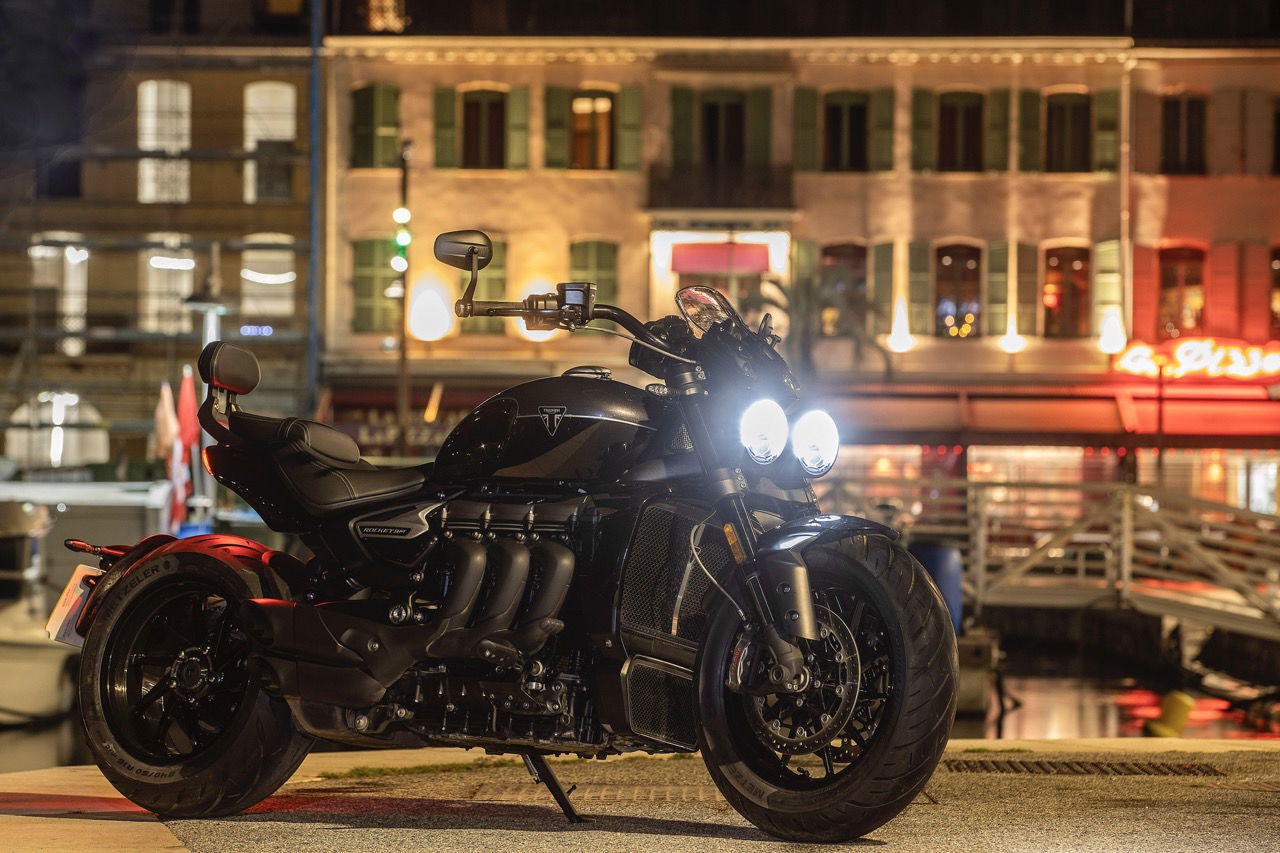
The Triumph Rocket 3 Storm R and Triumph Rocket 3 Storm GT are expected to be available from April 2024, when they will cost £23,195 and £23,895, respectively.
What’s new with the Rocket 3 Storm models
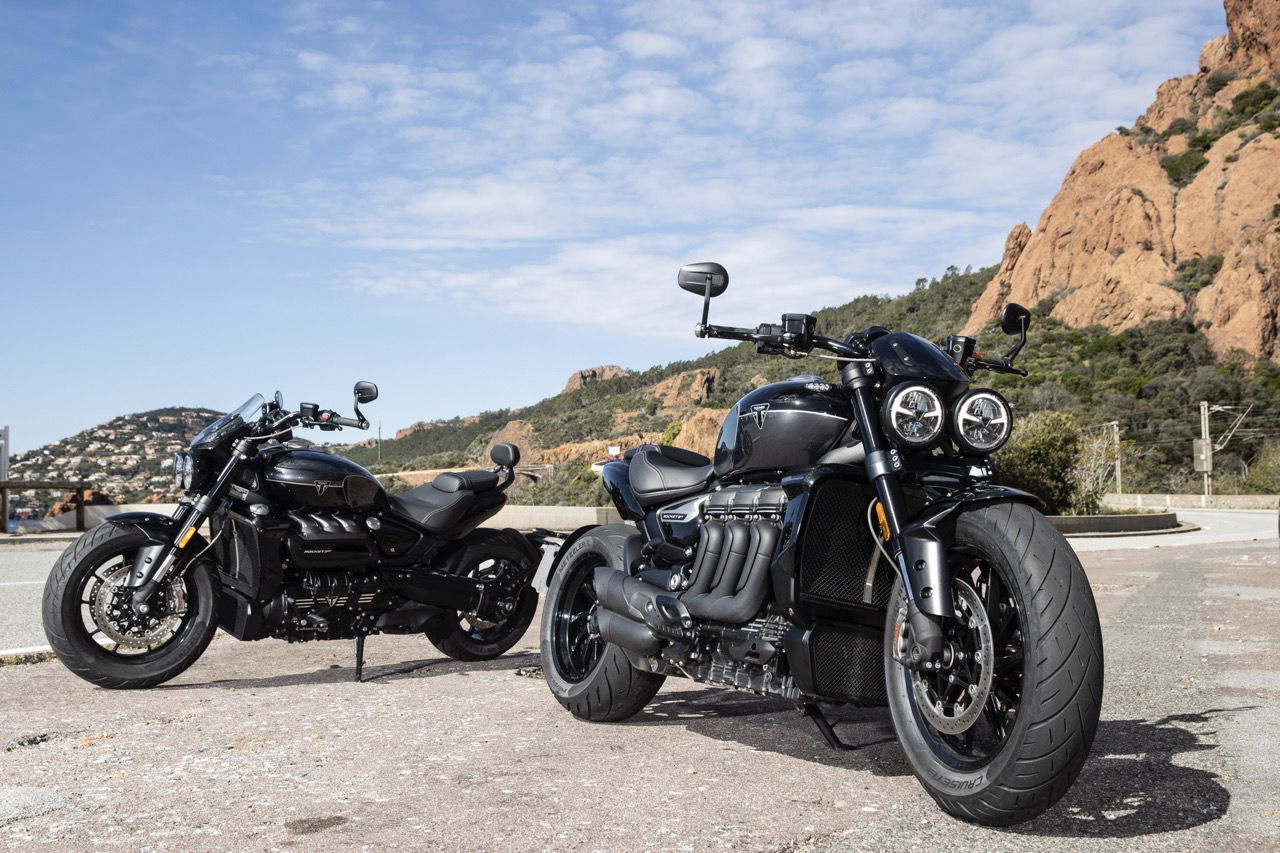
The Rocket 3 Storm R (R) and GT (L)
As before there is a GT and R version of the Rocket 3 Storm, and as before the heart of each bike is, of course, the engine. It’s mechanically identical to the unit that produced 165bhp in the pre-update Rocket 3, with its three cylinders arranged in-line and measuring a total of 2,458cc. Well, it’s identical in every way apart from performance, as that power figure is upped with the new Rocket 3 Storm to 180bhp. The torque is increased, too, up by 3lb ft to 166lb ft.
The engine is controlled via a ride-by-wire throttle as before and assisted by an electronic suite including traction control and cornering ABS, all of which have been adjusted for the new more powerful versions. There are also four riding modes (Road, Rain, Sport, and a custom mode), and the bike features a Torque Assist clutch for smoother shifting (a quickshifter is also available as an accessory). Selecting your way through the electronics is done via a five-way backlit joystick used to navigate the bike’s full-colour TFT.
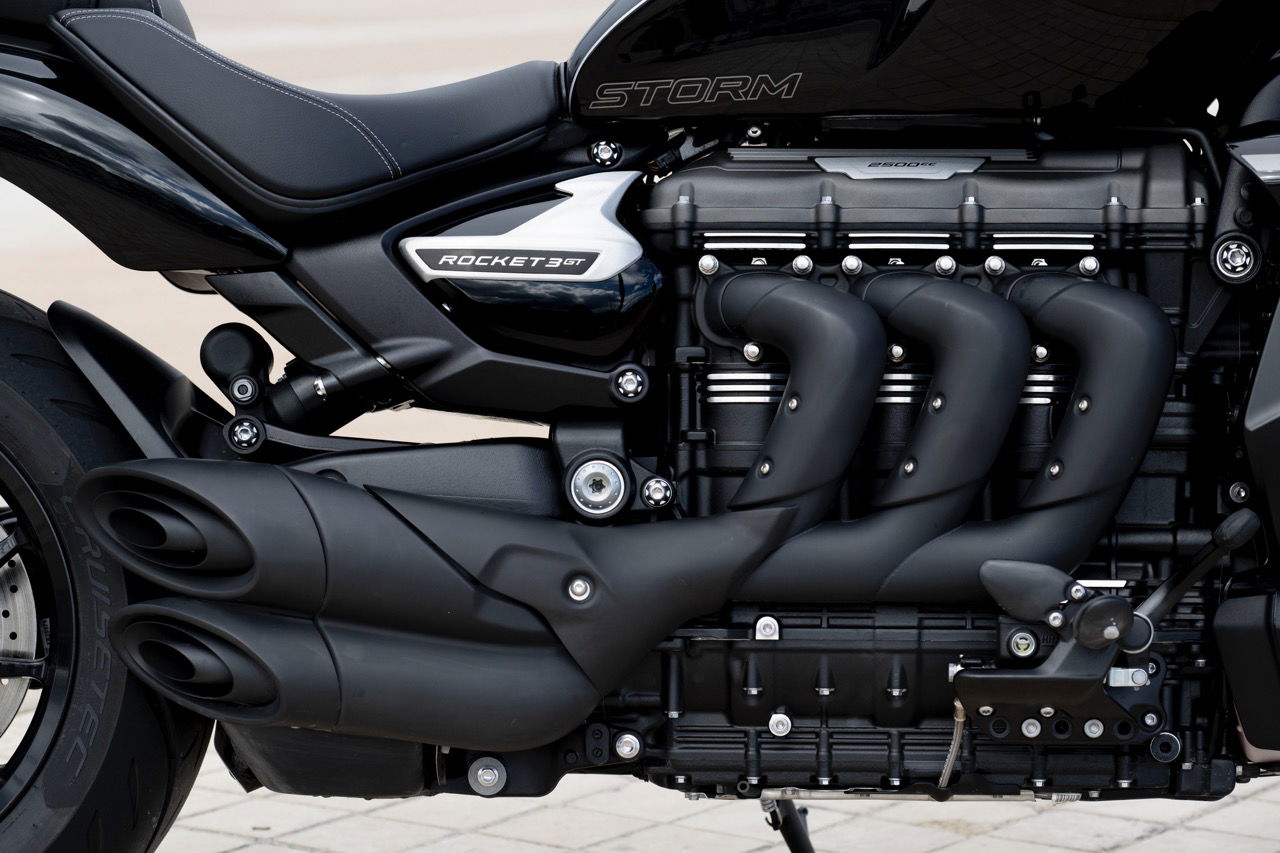
The Engine of the Rocket 3 Storm
Triumph says that the increase in engine outputs has been achieved by its increased understanding of the engine in 2024 compared to when the previous generation was introduced in 2019, allowing the engineers to unlock more potential from the motor even without changing the internals.
Along with the improved performance is slightly improved fuel economy (42.58mpg, up from 41.45mpg) and an associated benefit in CO2 emissions (152g/km), down 6g/km over the previous generation (158g/km).
That said, the average Rocket 3 buyer probably isn’t much interested in a small saving in carbon emissions, and is more interested in things like electronic cruise control, adjustable in mile-per-hour increments, twin 320mm front discs with Brembo Stylema callipers and a 300mm rear disc, fully adjustable Showa suspension, and probably the updated styling, too.
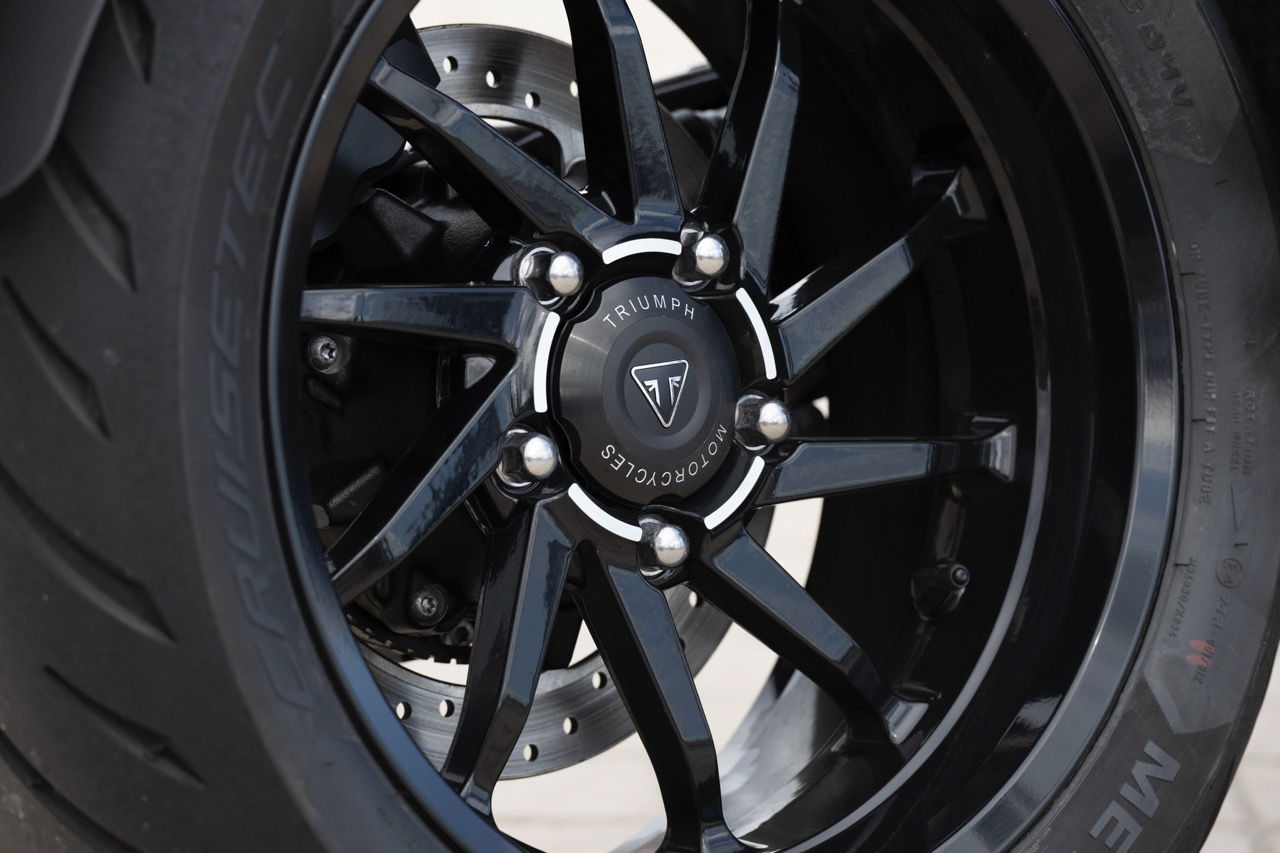
Although there are two variants, the theme for the styling is much the same across both. Triumph says the previous generation Rocket 3 sold best in black, and so it’s thrown a load of black paint at both of the new Rocket 3 Storms to create a deeper and darker overall look. The bodywork, for example, is two-tone in black and whatever other colour you choose from the selection available (Carnival Red, Satin Pacific Blue, and Sapphire Black). Plus, the following parts are all black-anodised: rear frame forging, swingarm guard, fork lowers and yokes, risers and handlebar clamps, RSU Rocker, seat finisher, footrests and hangers for rider and pillion, brake and gear pedals, levers, and side stand.
Triangular DRLs and LEDs front and rear are also supposed to add to the menacing aspect of the darkened look. All of that black anodising means that, in the Sapphire Black and Granite colour, it might even be dim enough for your average funeral doom listener.
What’s the difference between the Rocket 3 R and Rocket 3 GT?
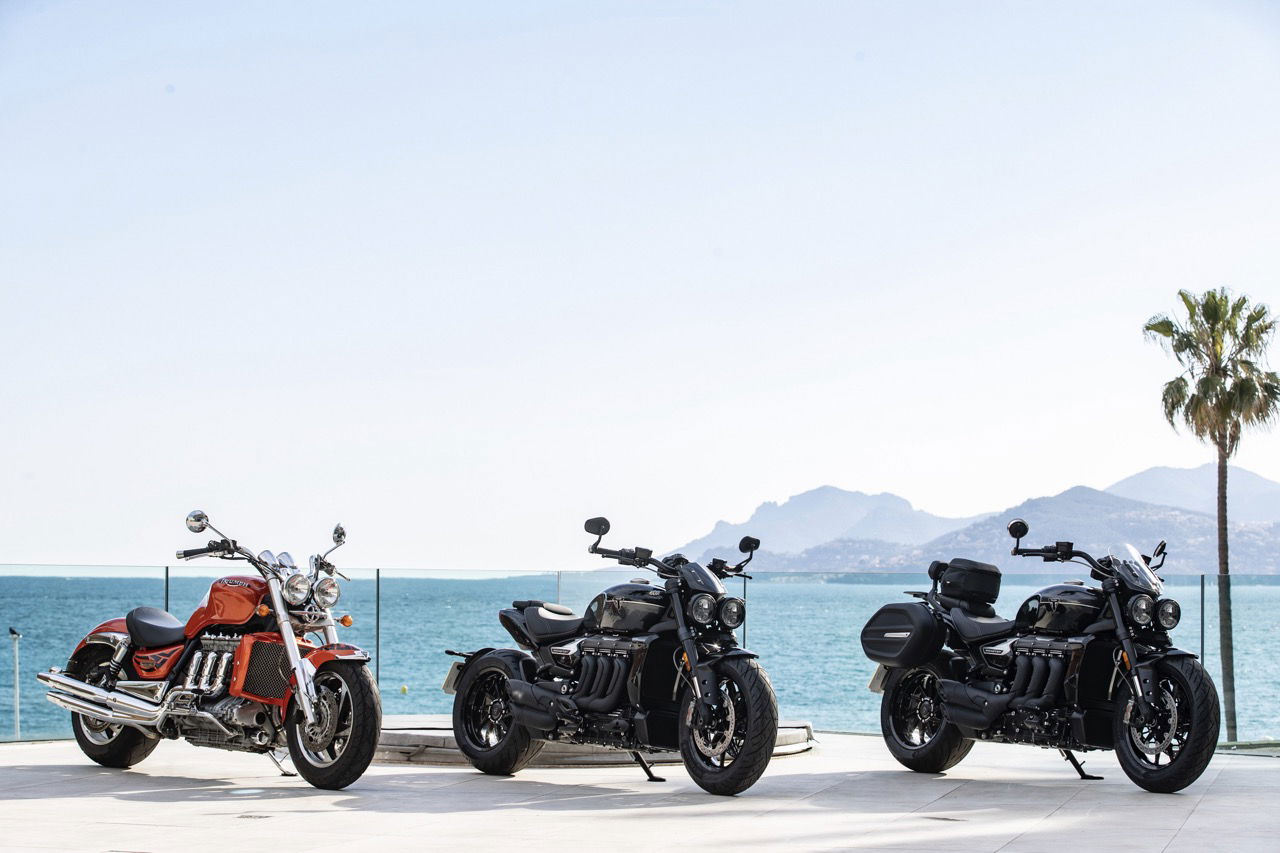
The two new bikes alongside an original 2004 Rocket III
Further, the new Storm has what Triumph calls “sportier” 10-spoke cast wheels. Although the 17-inch and 16-inch dimensions remain for the front and rear wheels, respectively, the mass is reduced, which contributes to improved handling characteristics.
Ergonomics are updated, too, mostly with differences between the GT and R models - the main aspect that separates the two versions.

For example, the R’s bars sit tall, while the GT’s are more swept back, generating a 125mm difference in bar grip position between the two. The seat height is also different between the two, with both the R’s pillion and rider seat height set at 773mm, while the GT’s is a slightly more reachable 750mm. The latter’s seat is also sculpted to offer better comfort during grander, touring-er rides, and the GT also comes with a pillion backrest with much the same intention in mind.
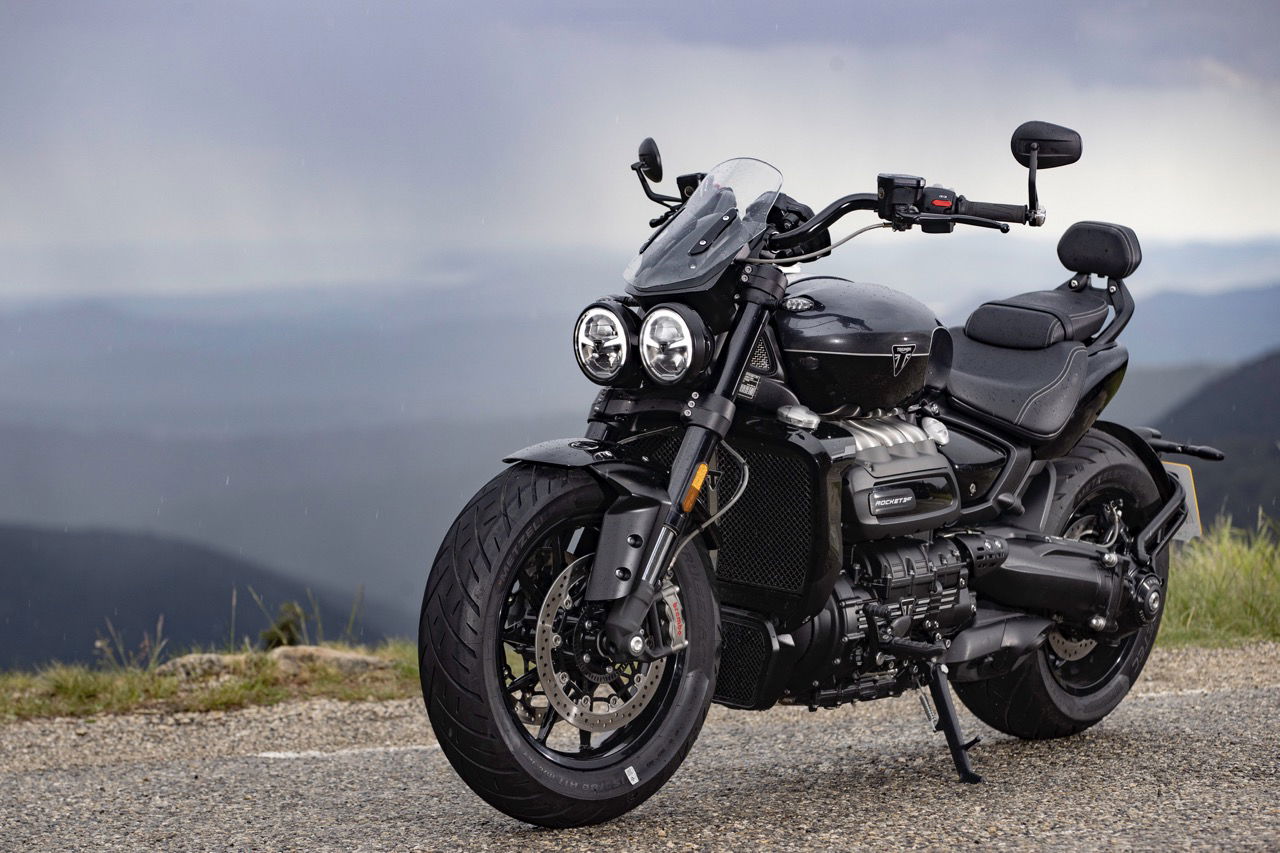
The biggest ergo difference, though, is at the footpegs. Not only are the GT’s set further forward than the mid-set pegs of the R, but the adjustment works in a different way, too: 15mm of vertical adjustability is available on the R, while the GT has 50mm of horizontal adjustment. The pillion footrests are another example of the blacked-out look, and they’re also retractable and nestle beneath the pillion seat when not in use.
What’s it like to ride?

As has always been the case, the engine here dominates the riding experience. Yes, there are more powerful engines out there, but in terms of torque, which is arguably more useful on the road, the Rocket 3 is in a league of its own. There’s a fat wall of it that arrives pretty much whatever the revs are the moment you open the throttle, sending the Rocket and its rider hurtling down the road like it has the first stage of a Saturn V up its chuff. ‘Rocket’ indeed.
You’d probably need to ride the old and new bikes back-to-back to see if that uplift in power is really noticeable. As it was, we had just under two weeks between our most recent go on the outgoing bike and the Storm and it was tricky to tell. 15bhp would be a decent increase for a lot of bikes, but since the bike had so much to start with, it’s not that big a leap in percentage terms. But hey, we’ll take the bragging rights kindly.
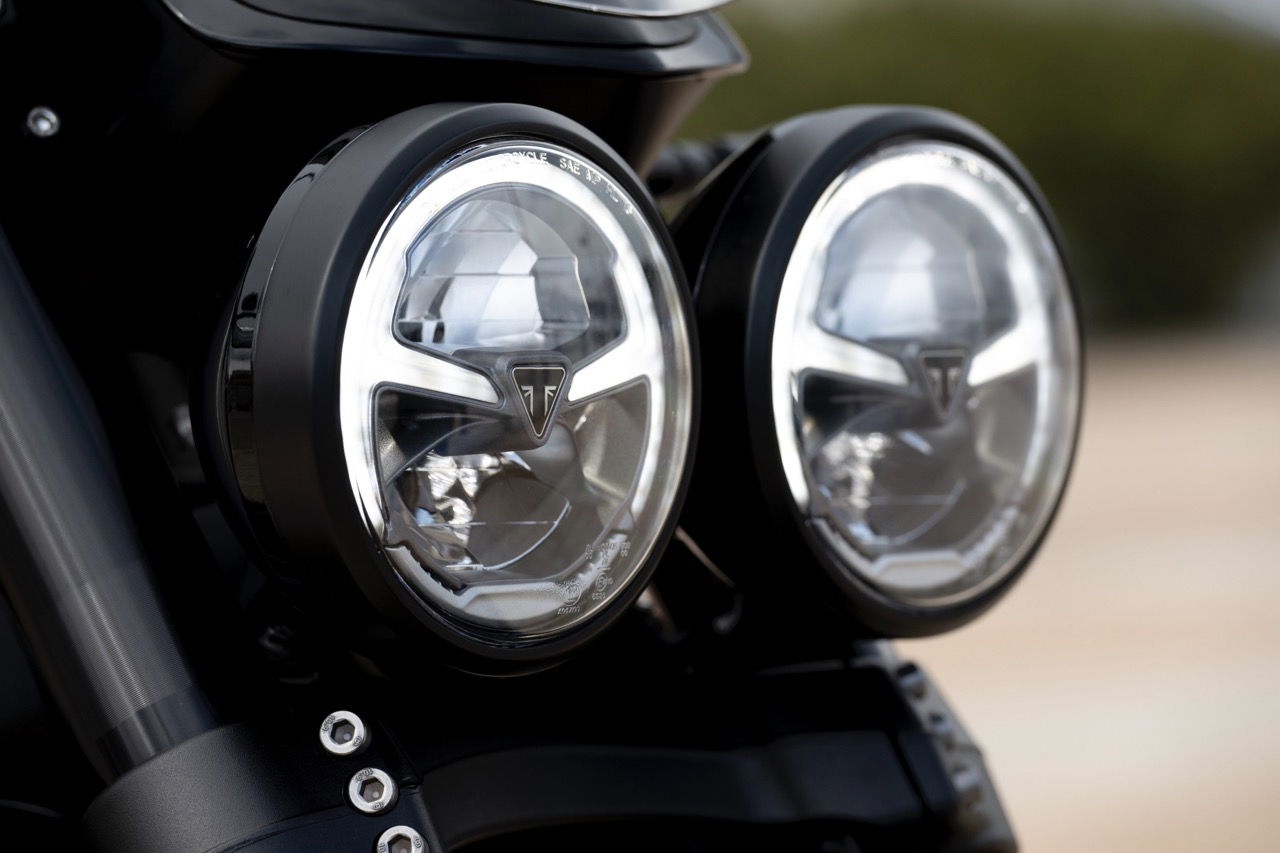
Peak twist arrives at 4,000rpm, but there’s so much torque in reserve that plenty is being developed from the idle point upwards. It means that for all its absurd straight-line performance, the Rocket 3 doesn’t feel as excessive on the road as something like a superbike that needs to be wound round to some heady RPM figure, nudging 100mph in first gear.
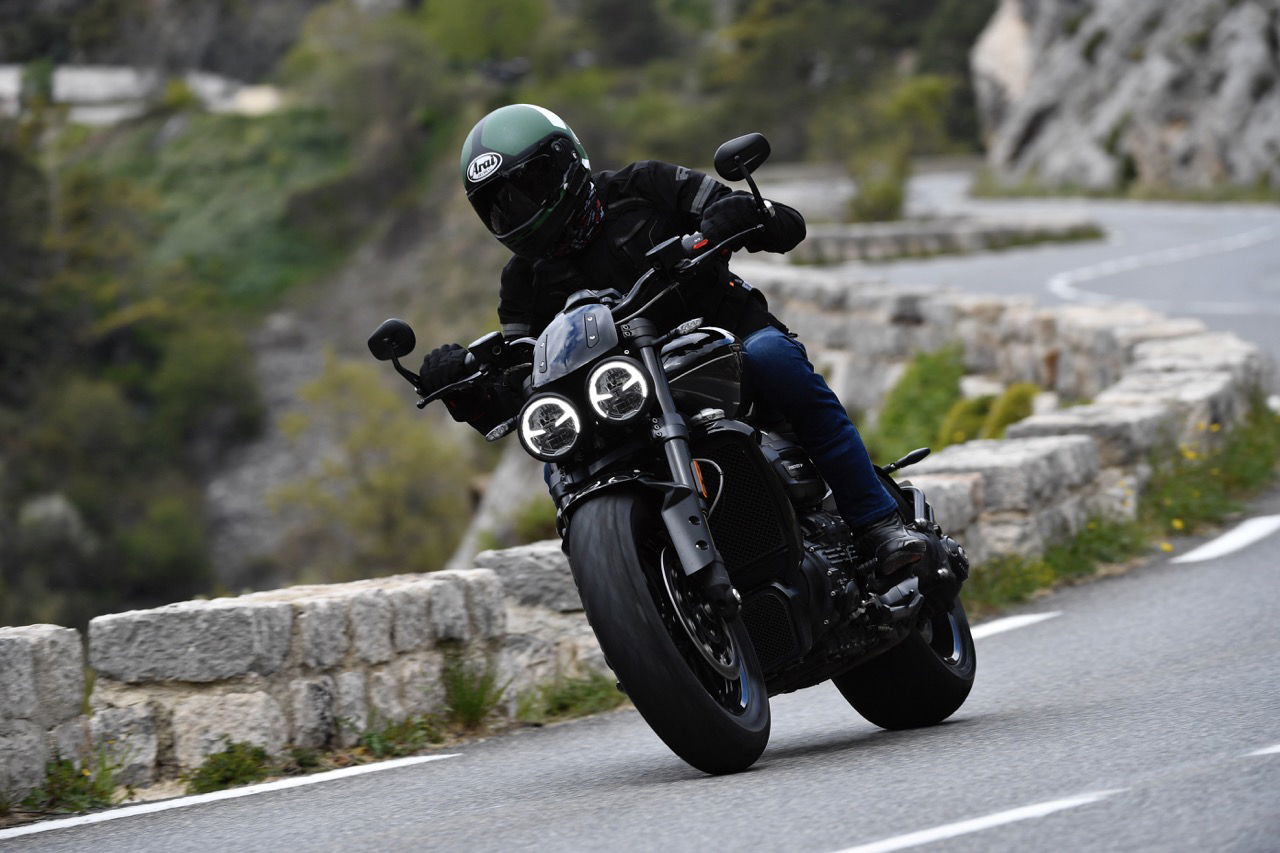
The Rocket instead makes its peak power figure at 7,000rpm - for reference, the Street Triple’s 765cc engine, will go to nearly 12,000rpm. In comparison, the Rocket’s inline-three is a proper bruiser, as it should in a heavyweight cruiser.
Speaking of weight, the Rocket 3 tips the scales at 317kg with fluids, which builds a picture in your mind of what the bike will be like to ride. That’s reinforced when paddling the bike around (which is probably a better bet than getting off and pushing unless your name’s Dwayne Johnson) - it’s a properly chunky thing.
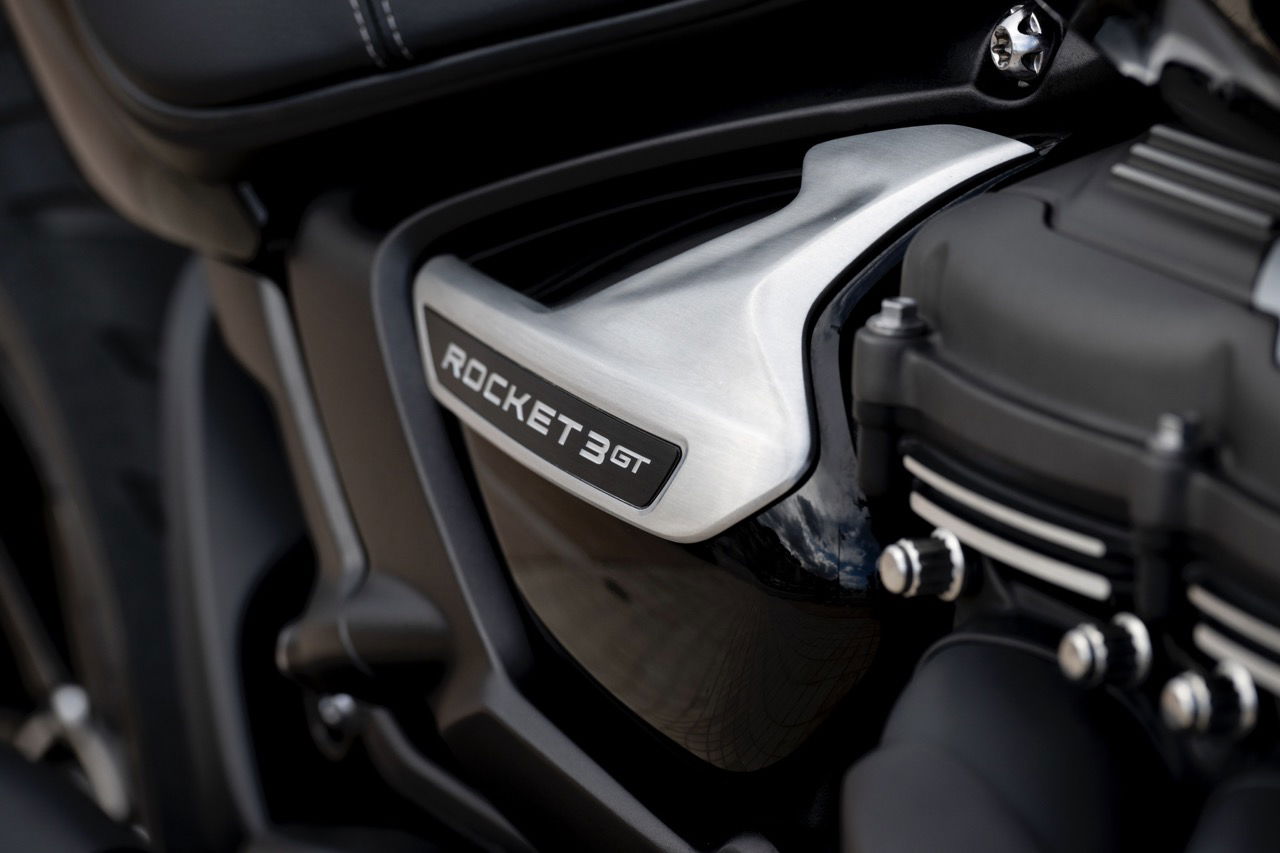
However, the longitudinal position of the engine helps keep all that weight very low, with the giant crankshaft lying only a few centimetres away from the tarmac. As such, the Rocket 3 is far keener to tip in than you might expect. Yes, it is still apparent that the Rocket is what the kids these days would refer to as a ‘big chungus’, requiring some firm inputs to get it steering quickly, but you can take far more liberties with it than seems possible. Ground clearance can be an issue, but you need to be pressing on quite enthusiastically before pegs and/or boots make contact with the road.
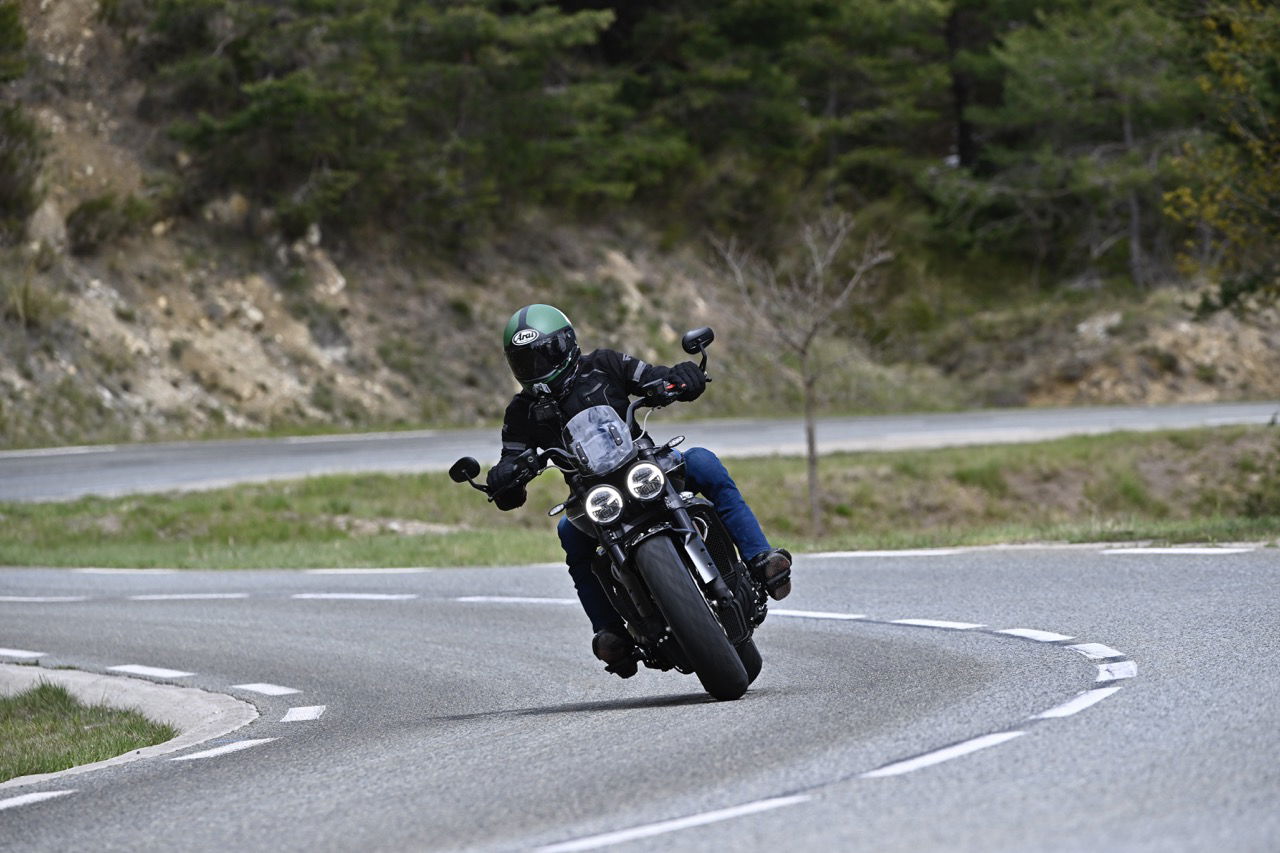
Exactly how you end up riding is likely to be influenced by the kind of Rocket 3 Storm you buy. The GT’s riding position is significantly different with that legs forward stance and close-set bar giving a very relaxed feel. Great for touring, but to really get the most out of the bike’s remarkable chassis, you want the R.
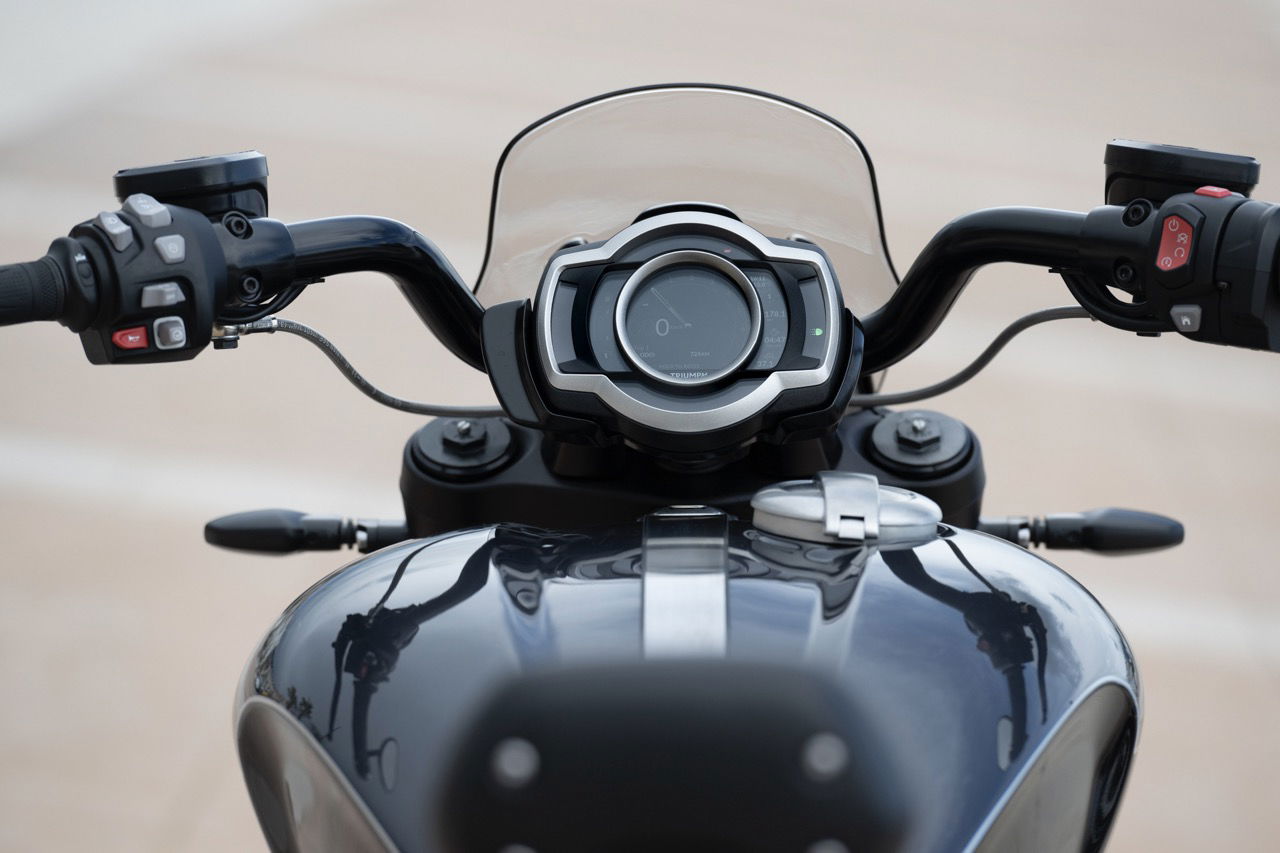
Along with the sportier, middle peg position, leaning further forward and with a straighter bar makes it easier to leverage that surprisingly willing front end. We’d even be tempted to pair an R with the optional quickshifter, such is its sportiness, even though such a device might seem incongruous on a cruiser.
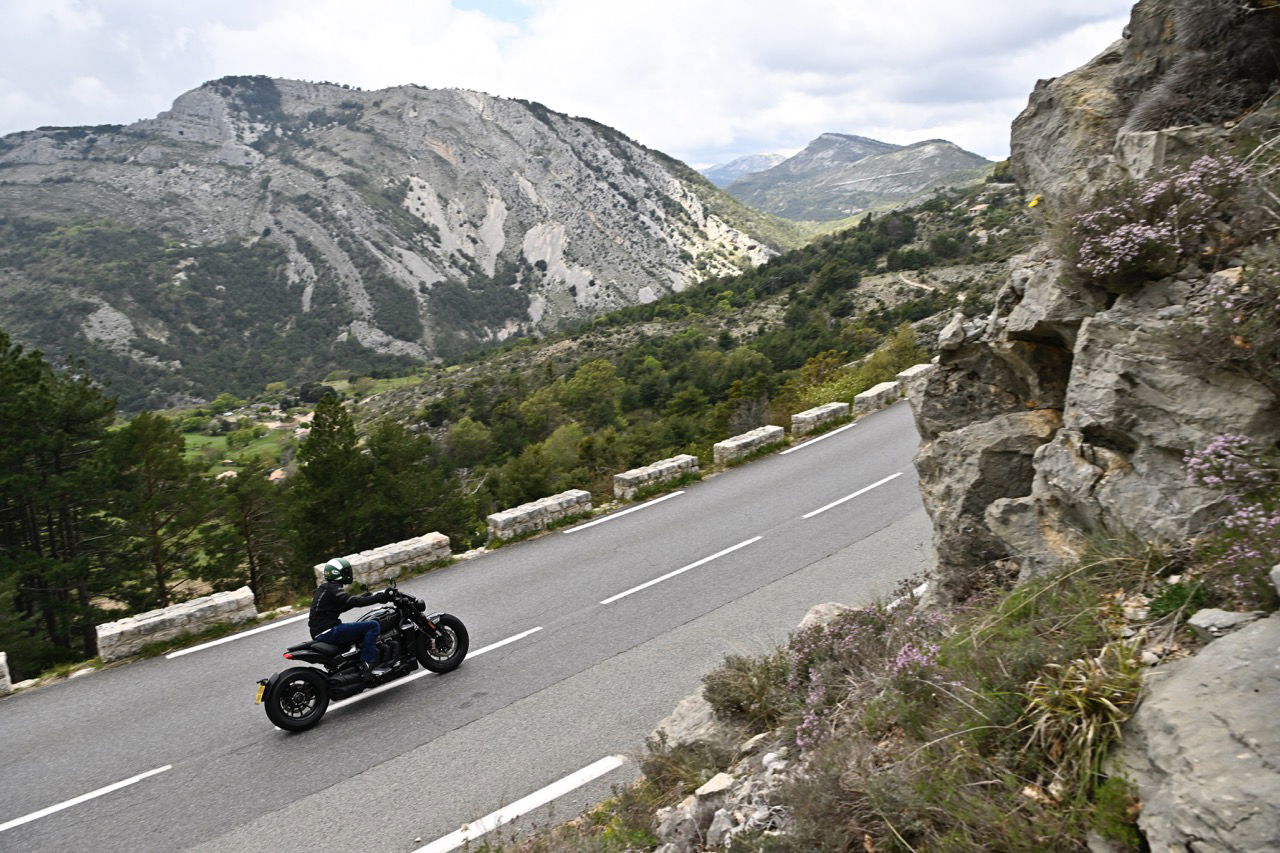
With the R, you start to forget the kind of bike you’re on, riding it more like a big bore naked than a 300kg+ cruiser with fat tyres. Very well-sorted and beefy suspension (the fork stanchions are 47mm thick) keeps things further in check. It’s a reasonably firm setup, helping increase the bike’s general feeling of sharpness and reduce brake dive even though there’s a whole lot of weight threatening to compress the suspension. The damping is plush enough, though, that the Rocket 3 doesn’t feel harsh when dealing with choppier bits of tarmac.

There are still a few points of complaint, but they’re all fairly minor. The gear indicator is weirdly slow to catch up with what your left boot is doing, while we’re talking about the display, I’d probably rather have the five-axis joystick somewhere other than directly under the indicator switch.
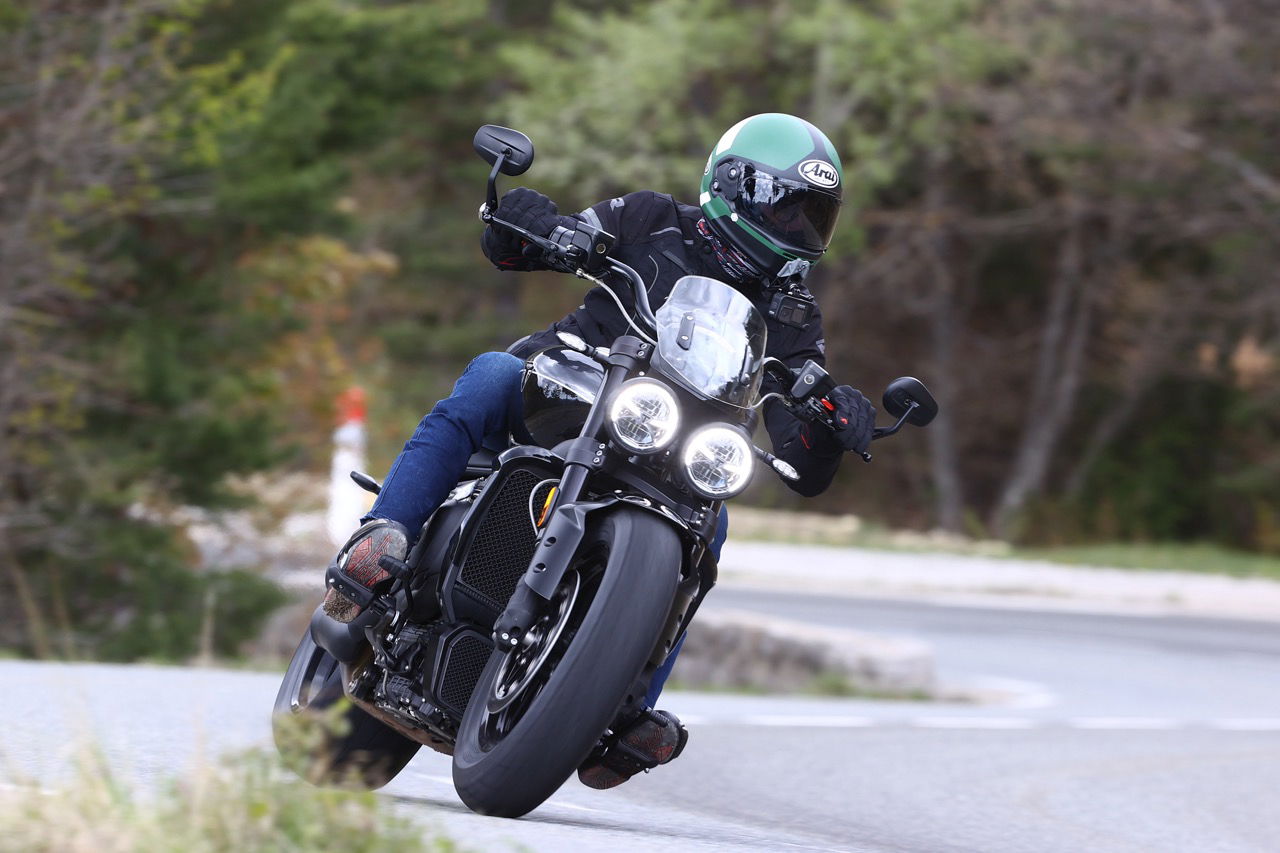
The engine does, unsurprisingly, have a pretty outrageous thirst if regularly exercised. We averaged around 35mpg during our day of riding, some way short of the official figures, and the last time we had a pre-Storm Rocket on test, we didn’t manage to crack 30mpg. It also kicks out an incredible amount of heat, so be prepared for some toasty thighs if you’re negotiating traffic, and at some engine speeds the bars can be a touch vibey, but that’s to be expected when powering your bike with a monsterous triple.
Should you buy a Triumph Rocket 3 Storm?
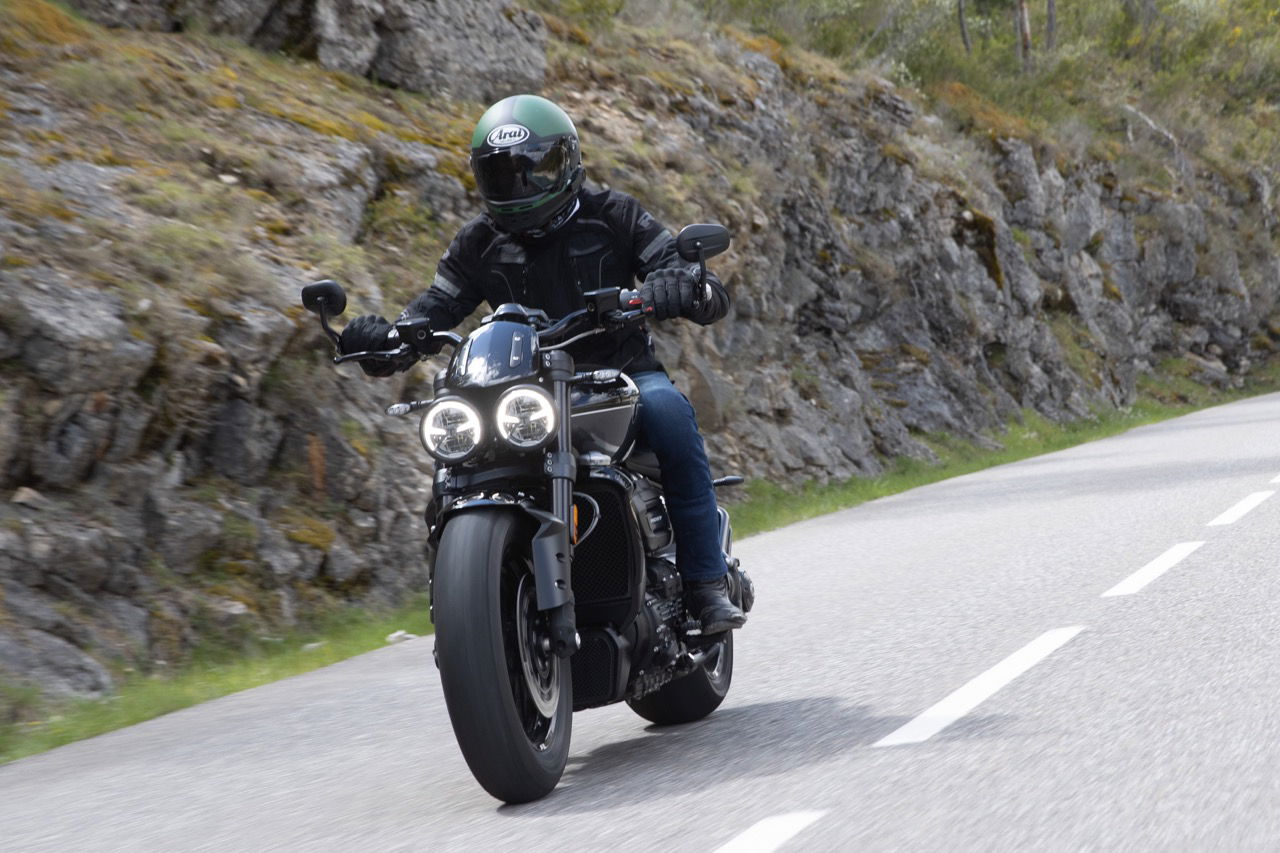
The changes to the Rocket 3 Storm don’t amount to a fundamentally different feeling bike. The riding experience is much the same, it’s just that when you get off, you might spend a little more time looking at it - ditching the spanglier look of the old bike for a moodier, black-out aesthetic has done wonders for what was already a striking bike. It’s a more modern, slick-looking thing.
Combined with all the stuff that makes the outgoing Rocket so much fun - the bonkers engine, the surprisingly sharp handling and the general absurdity of the whole idea - the Storm becomes an extremely appealing bike, and one that’ll surprise you. It’s easy to look at the Rocket 3 Storm and think it’s not going to be your cup of tea, but try one, and it might just win you over.
No, it’s not cheap, but considering how much bike you’re getting for the price - physically, in terms of its size and weight, plus its ludicrous performance and sheer presence - you might even consider it good value.
Rocket 3 Storm R and GT specs
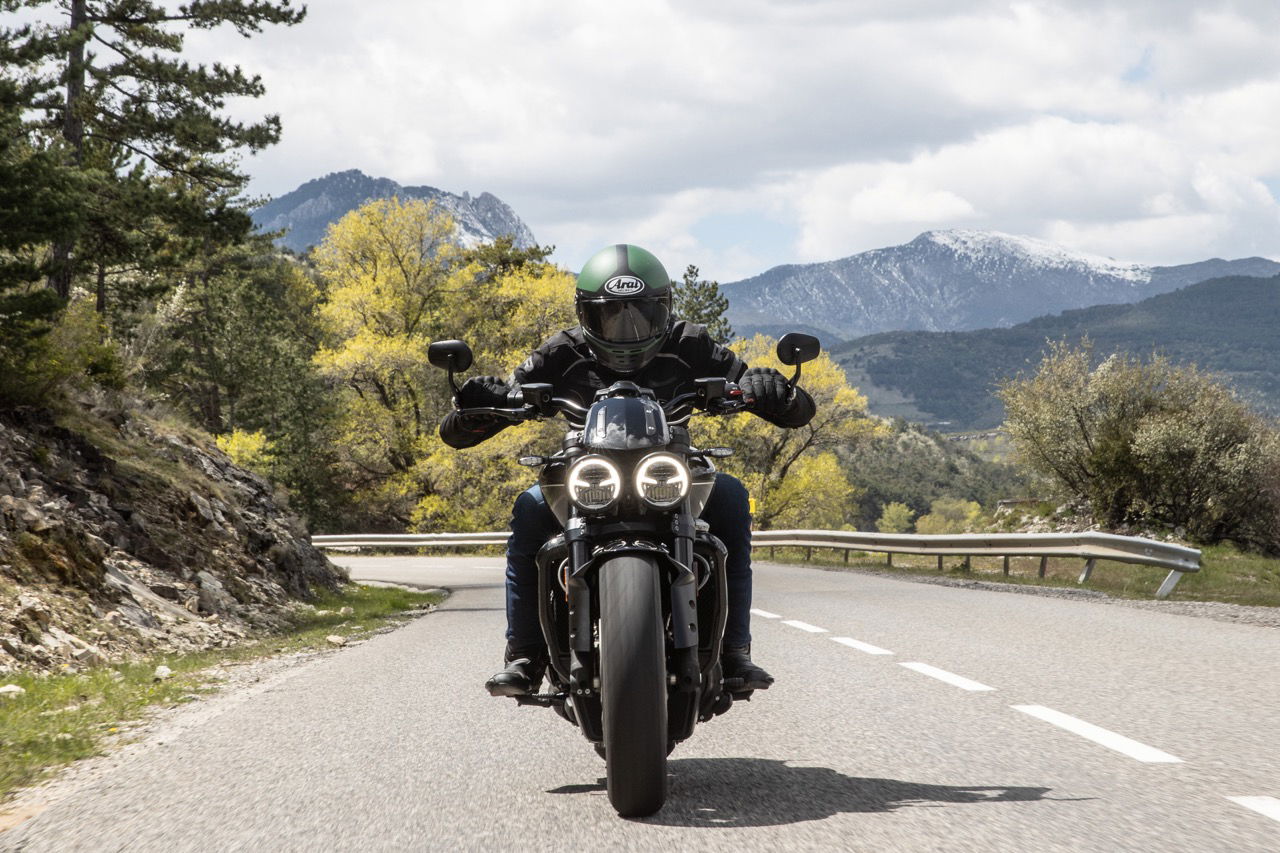
CHASSIS | ROCKET 3 STORM R AND GT |
Frame | Full aluminium frame |
Swingarm | Single sided, cast aluminium |
Front Wheel | 17 x 3.5-inch cast aluminium |
Rear Wheel | 16 x 7.5-inch cast aluminium |
Front Tyre | 150/80 R17 V |
Rear Tyre | 240/50 R16 V |
Front Suspension | Showa 47mm upside-down 1+1 cartridge front forks, compression and rebound adjustment, 120mm wheel travel |
Rear Suspension | Fully adjustable Showa piggyback reservoir RSU with remote hydraulic preload adjustment, 107mm wheel travel |
Front Brakes | Dual 320mm discs, Brembo M4.30 Stylema® 4-piston radial monobloc calipers, Optimised Cornering ABS |
Rear Brakes | Single 300mm disc, Brembo M4.32 4-piston monobloc caliper, Optimised Cornering ABS |
Instruments | TFT multi-functional instrument pack with;
Triumph TFT Connectivity System can be added with accessory fitted Bluetooth module |
SPECIFICATION DIMENSIONS AND WEIGHTS
DIMENSIONS & WEIGHTS | ROCKET 3 STORM R | ROCKET 3 STORM GT |
Length | 2365 mm (93.1 in) | |
Width (Handlebars and fittings) | 920 mm (36.0 in) | |
Height Without Mirrors | 1125 mm (44.3 in) | 1183 mm (46.6 in) |
Seat Height | 773 mm (30.4 in) | 750 mm (29.5 in) |
Wheelbase | 1677 mm (66.0 in) | |
Rake | 27.9 ° | |
Trail | 134.9 mm (5.3 in) | |
Wet weight | 320kg | 317kg |
Fuel Tank Capacity | 18.0 litres (4.76 US gal) | |
SPECIFICATION EQUIPMENT
ROCKET 3 STORM R | ROCKET 3 STORM GT | |
Standard | Full colour TFT instruments 4 riding modes USB charging | |
+ Heated grips | ||
Accessory-fit | Triumph Shift Assist Bluetooth connectivity module (enabling turn-by-turn navigation, phone and music operation) | |
Find all the latest motorcycle reviews on Visordown.
